1. What is Evidence-based Dentistry?
1.1. It is an approach to oral health that requires the judicious integration of
1.1.1. systematic assessments of clinically relevant scientific evidence, relating to the patient’s oral and medical condition and history, together with the
1.1.2. dentist’s clinical expertise and
1.1.3. the patient’s treatment needs and preferences.
2. Why Practice EBD?
2.1. Helps filter immense amount of information that emerges in the literature
2.2. Effective method of keeping up with the most current research
2.3. Provides information on how similar cases treated
3. References
3.1. ADA Center for Evidence-Based Dentistry
3.2. EBD Resources
4. --
5. Steps
5.1. ASSESS the Patient ( Identify Clinical Problem)
5.1.1. the effects of therapy
5.1.2. the utility of diagnostic tests
5.1.3. the prognosis of diseases
5.1.4. the etiology of disorders
5.2. ASK the Question ( A Focused Clinical Question)
5.2.1. Using PICO format
5.2.1.1. P ( Patient / Problem / Population )
5.2.1.2. I ( Intervention )
5.2.1.3. C ( Comparison )
5.2.1.4. O ( Outcome )
5.3. ACQUIRE the evidence ( Select the appropriate resource(s) and conduct a search )
5.3.1. Ideally, you would like to find a systematic review to answer your question. Systematic reviews are often referred to as “Level I Evidence”.
5.3.2. Unfortunately, there aren’t systematic reviews to answer every clinical question
5.3.3. Databases to locate evidence
5.3.3.1. PubMed
5.3.3.2. Cochrane Library
5.3.3.3. TRIP Database
5.3.3.4. DARE (Database of Abstracts of Reviews of Effectiveness)
5.3.3.5. National Guideline Clearinghouse
5.3.4. Different types of clinical questions are best answered by different types of research studies.
5.3.4.1. All Clinical Questions = Systematic review, meta-analysis
5.3.4.2. Therapy = Randomized controlled trial (RCT)Also: cohort study, case-control study, case series
5.3.4.3. Etiology or harm = Cohort studyAlso: case-control study, case series
5.3.4.4. Diagnosis = Validating cohort study with goldstandards / Prospective studies
5.3.4.5. Prevention = Randomized controlled trial (RCT), Also: prospective study, cohort study, case-control study, case series
5.3.4.6. Prognosis = Cohort study / Also: case-control study, case series
5.4. APPRAISE the evidence ( for its validity & applicability )
5.4.1. Questions generated about: •the effects of therapy •the utility of diagnostic tests •the prognosis of diseases •the etiology of disorders
5.4.2. Summarise the results of all the articles (like Evidence based tables in systematic reviews)
5.5. APPLY ( by talking with the patient & integrating that evidence with clinical expertise, patient preferences and apply it to practice)
5.6. Self-evaluation ( Evaluate the Impact on Practice )
5.6.1. Evaluate your performance with this patient.
5.6.2. Evaluate the decision with similar patients
5.6.3. Update the evidence –if needed.
